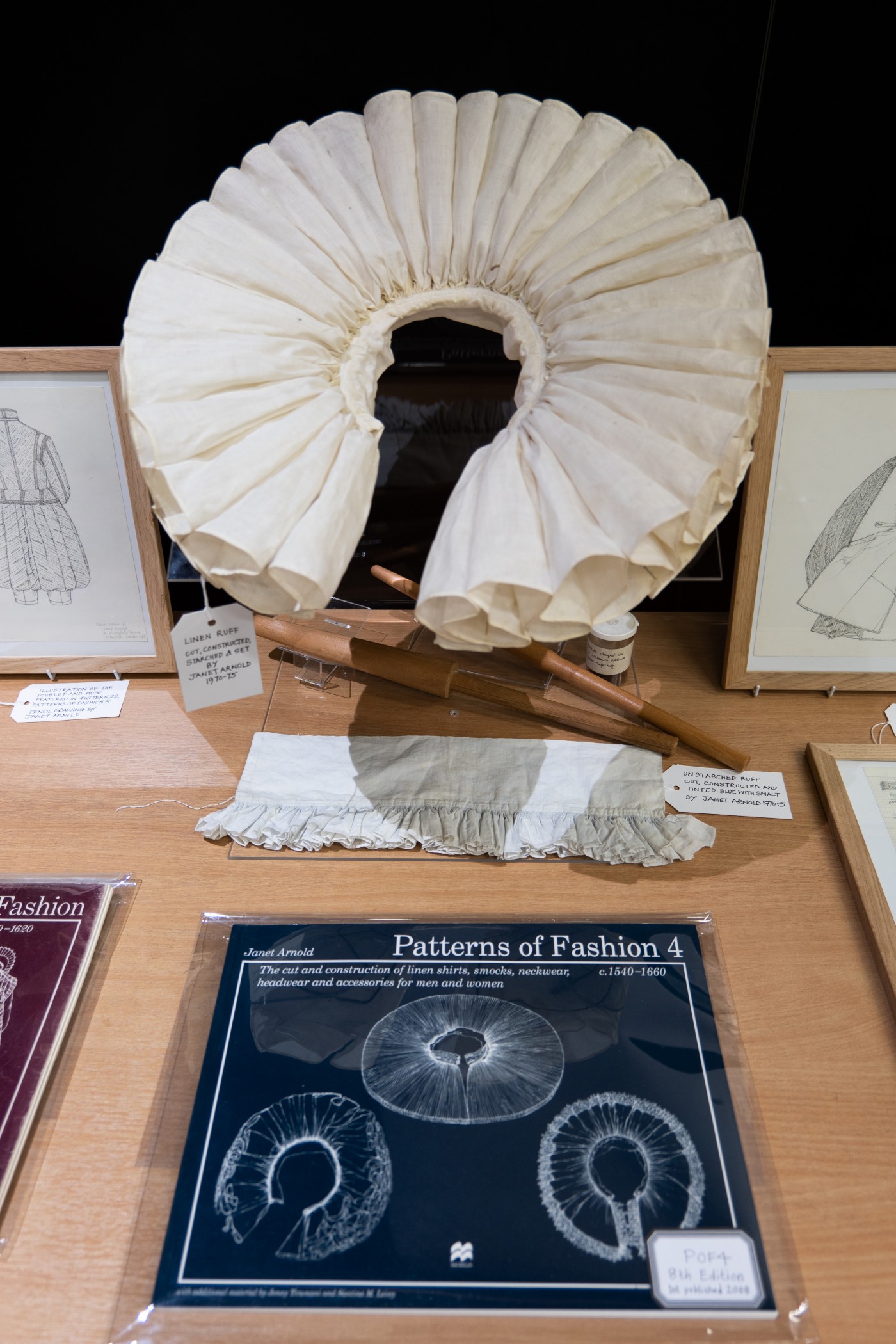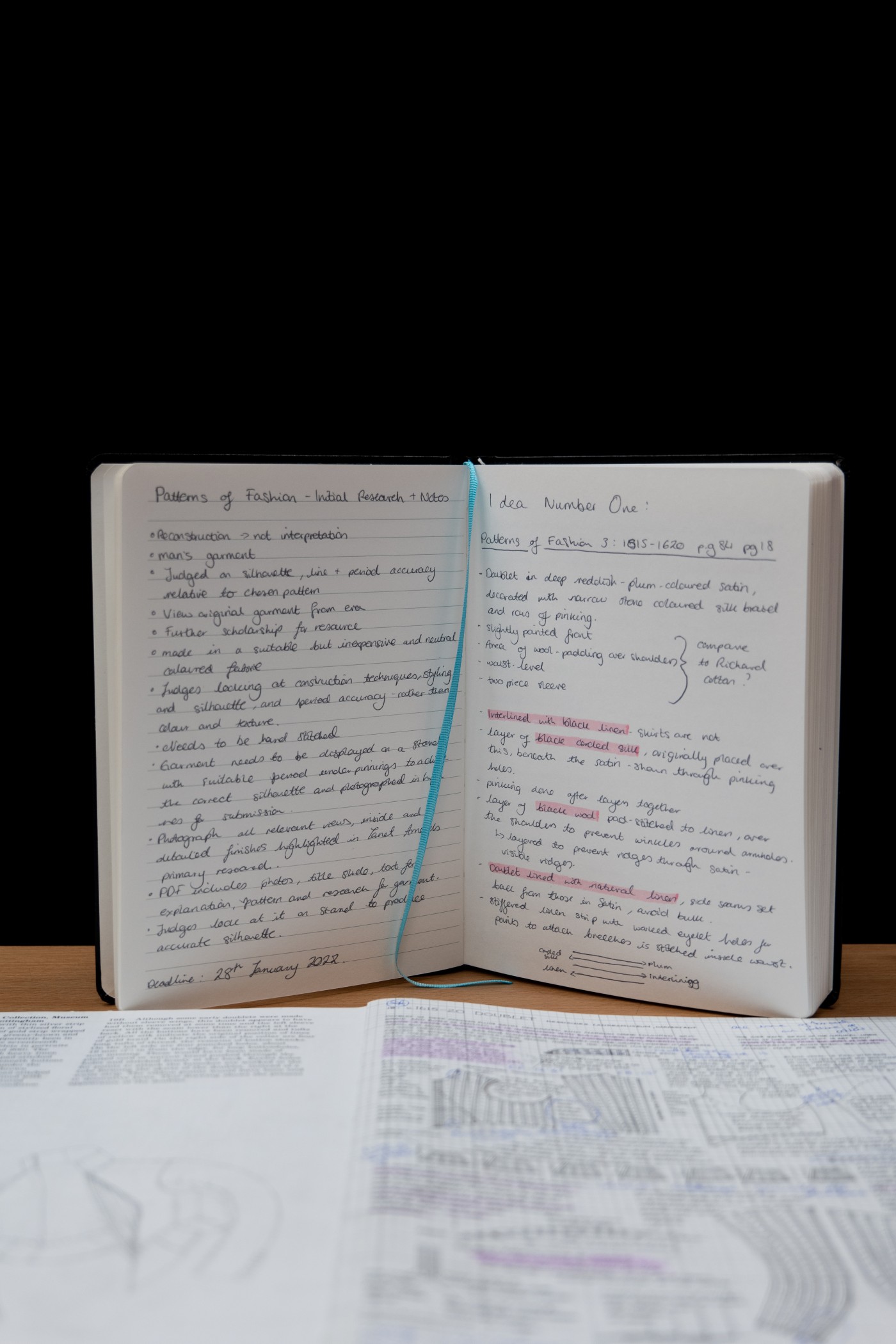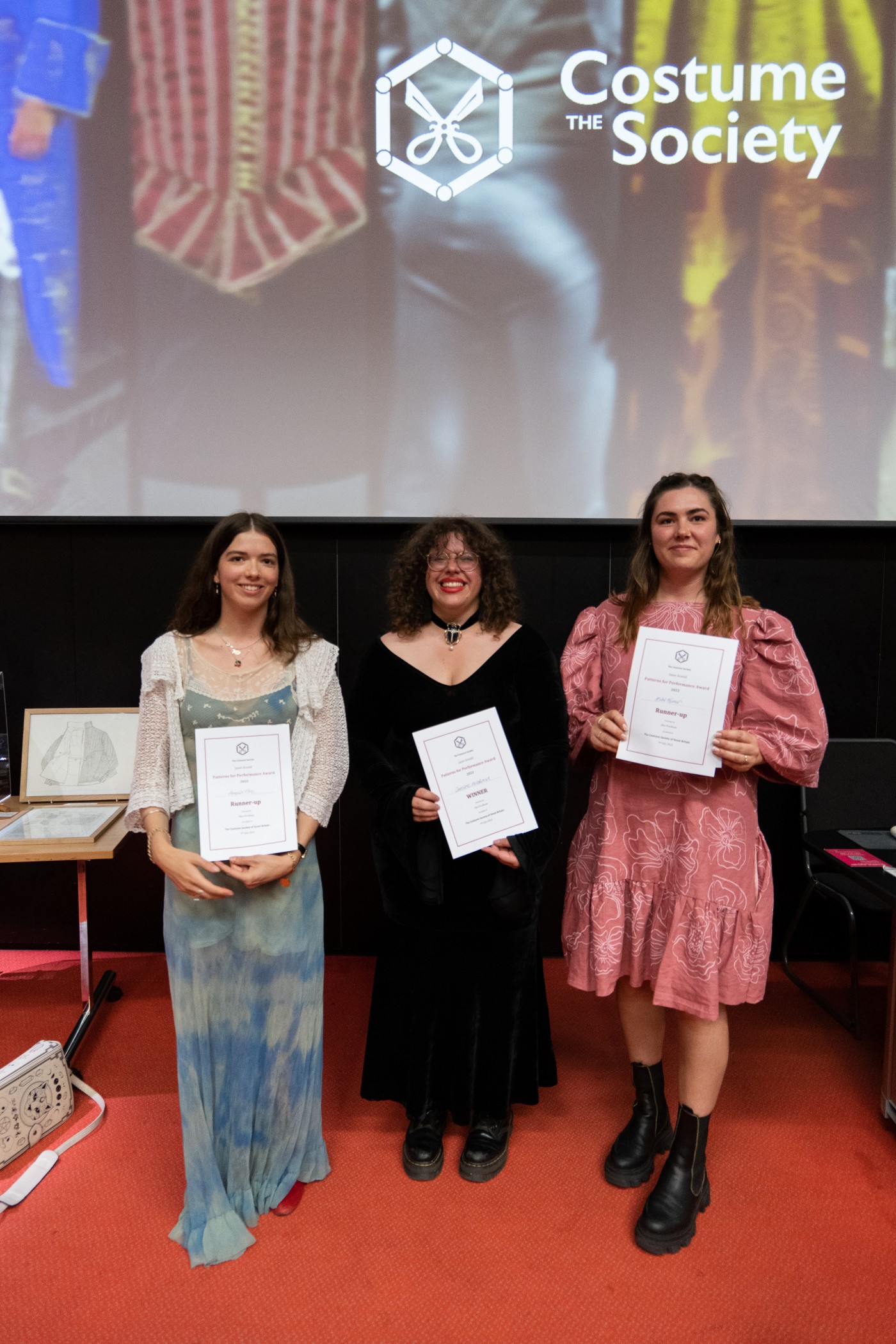- youtube
- bluesky
- Home
- About
- Costume Journal
- Membership
- Conference & Events
- Grants & Awards
- News & Social
In this week's blog post, Costume Society Ambassador Annika Gralke reviews this year's annual study day, "Aspects of Cool". From inspiring keynote speakers Dr Michael McMillan and Dr Llewella Chapman to award-giving, Annika recounts how the Costume Society delved into menswear at the event.
The Costume Society’s Annual Study Day “Aspects of Cool” was held on the 9th of July 2022 at London College of Fashion. After going through the AGM, members and visitors were able to glance at the Patterns of Fashion and Patterns for Performance award finalist’s work, which was about to be judged later in the day. Before that, however, our two wonderful keynote speakers Michael McMillan and Dr Llewella Chapman shared their inspiring research into cool aspects of menswear with the audience.
Michael presented extracts from his on-going research into Black men’s style focusing on the clothing choices of men in their 50s reflecting themes of social and cultural capital. Thereby, he drew both on oral testimonies of two exquisitely dressed, older Black British men working in community development who caught his attention at a funeral they attended, as well as on his own self-reflective, auto-ethnographic perspective as an older black man, referring to the saying who feels it knows it.
For Michael and his interviewees, growing up in the 70s meant a constant struggle of identity due to being denied their Britishness (despite being born in the UK) on the one hand, and being racially profiled and othered on the other. Developing and embodying a cool attitude and a protruding stylin’ (African American urban slang for “showing off”), then, emerged as a significant means to conserve pride and individuality against the homogenous and hegemonic power of the white imaginary.
Cool, as Michael explained, is a term that has often been historically associated with black bodies. Referring to the anthropologist Robert Ferris Thompson, the term originated in Nigeria and was used to denote the reserve and grace retained by enslaved Africans in situations under pressure where displaying emotions would have meant losing everything.
The significance of dressing up rather than dressing down was further accentuated by example of “the Great Masculine Enunciation”, a term coined by Christine Checinska, of the Haitian Revolution between 1791-1804. The self-liberating revolt of the functionally, anonymously (un)dressed enslaved Africans against French colonial power enabled a new form of sophisticated, beautified, and individualised peacock dress for African diasporic males – which can be seen as a reverse of the Western “Great Masculine Renunciation” of the French Revolution.
I particularly enjoyed Michael’s exhaustive reference to and inclusion of both well-known and less popular scholars and ideas. In a fashion system that is still obsessed with the beauty ideal of young, thin, sexualised, and most importantly, white bodies, we need more scholarship that explores the lived experience of the otherwise exiled bodies, and that goes beyond mere representation.
The second keynote speaker, Dr Llewella Chapman, spoke on her recent book “Fashioning James Bond: Costume, Gender and Identity in the World of 007” in which she explored how the sartorial style of James Bond has been incorporated into menswear products and marketing campaigns since the 1960s and how Ian Fleming’s aspirational character switched allegiance from Savile Row to continental tailors.
Despite there only being little description on Bond’s attire in Ian Lancaster Fleming’s 1950s original novels, and those descriptions conspicuously resembling Fleming’s private upper-class style, Agent 007’s marketing potential was quickly recognised by a number of British fashion retailers and clothing manufacturers even before the first movie was released in 1963.
However, to give Bond a broader box office appeal, the producers sought to create a slightly more rough-cut style of “a sexual athlete who would look great in Savile Row suits, but with the lean midriff of a character who starts his day with 20 push-ups” – a style then so perfectly embodied by the first Bond personification Sean Connery (even though his suits were initially tailored by Anthony Sinclair on Conduit Street, not on Savile Row).
Over the years, James Bond’s semantic codes arguably became the epitome of what many people associate with a cool style: sophisticated, elegant clothes which remained impeccable in whatever situation an undercover agent my find himself in.
Llewella drew on an impressively wide range of archival material, interviews with families of tailors and manufacturers who assisted in creating the 'look' of James Bond, and a meticulous analysis of the costumes and fashion brands featured in the Bond films. In the book, she deep-dives into each Bond movie, analysing how the franchise-ification of agent 007’s character allowed the audience to become part of his iconic lifestyle, through attiring the fashions as seen on screen.
“Fashioning James Bond – Costume, Gender and Identity in the World of 007” is published with Bloomsbury Publishing and can be purchased here.
Finally, the award ceremony took place. The Patterns of Fashion and The Patterns for Performance Awards are two of The Costume Society’s awards bestowed for costume or fashion design students that demonstrate excellent workmanship and a high standard of artistry.
In line with our year-long focus, the awards will celebrate Menswear and students were encouraged to use patterns from both Janet Arnold and Norah Waugh, two outstanding dress historians, costume designers, teachers, conservators, and authors, and the former being one of The Costume Society's founders.
Milly Whitefield won the Patterns for Fashion Award for her completely hand-sewn, 17th century men’s doublet reproduction of a pattern from Nora Waugh’s Cut of Men’s Clothes, with the fabulous creations of Eleanor Soulsby and Natasha Bowles as the runner ups. See their fantastic work and read about their inspiration here.
For the Patterns of Performance Award, Caroline Husband’s infinity-pleated waistcoat for the character of Herman from Tchaikovsky’s The Queen of Spades was chosen as the first winner, closely followed by Bibi Forrer and Amelia Pike.
After such a long time of being unable to meet in person, it was wonderful to see so many of our lovely members (as well as new faces!) in person again and witnessing the many perspectives that Menswear can be explored from.
And this is not even all: If these insights have caught your interest, why not join us for our upcoming conference “Clothes Maketh the Man’: Men’s Clothing and Concepts of Masculinities Expressed through Appearance” taking place between October 22-29 online? The speakers have just been announced and tickets are open for bookings.
See you there!
Image gallery

Janet Arnold's Patterns of Fashion display.

Patterns of Fashion finalists Milly Whitehead, Eleanor Soulsby and Natasha Bowles.

Patterns of Fashion Award preparation materials on display.

Patterns for Performance finalists Caroline Husband, Bibi Forrer and Amelia Pike.